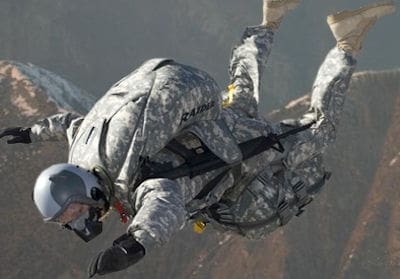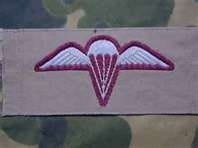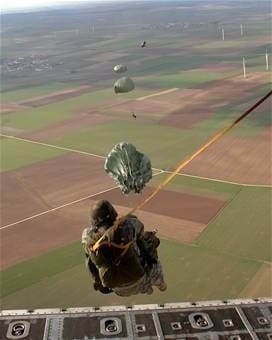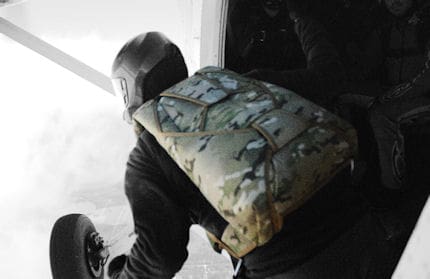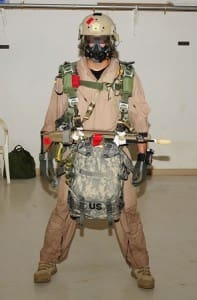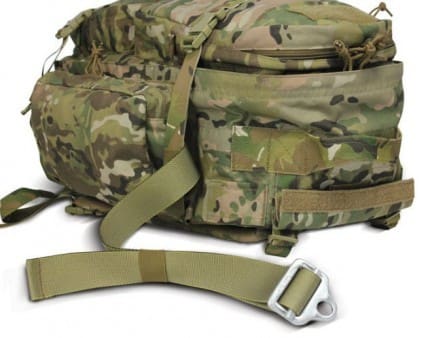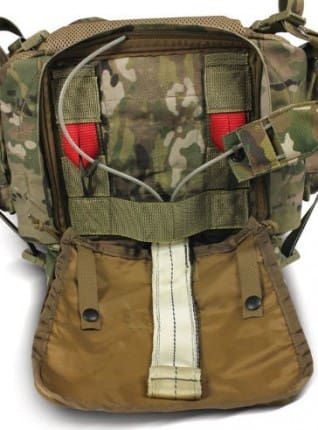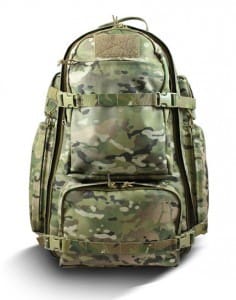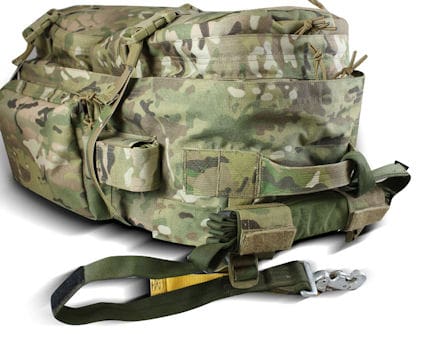Airborne Systems, a subsidiary of HDT Global (“HDTâ€), has been awarded a $27 million firm fixed-price IDIQ contract by the US Army’s Research, Development, and Engineering Command (RDECOM) for the production and delivery of an estimated 3,600 Military Free Fall Advanced Ram Air Parachute Systems (MFF ARAPS) utilizing Airborne System’s Intruder parachute system. The contract includes an 18-month base ordering period and a 42-month optional ordering period.
ARAPS consists of the Intruder 360 main parachute, the Intruder 360 reserve parachute, and the Raider 2 harness/container. The system is also available from Airborne Systems with a smaller Intruder main and reserve canopy of 300 ft². This move will affect all US forces currently using the MC-4. In addition to replacing the MC-4, SOCOM funding will also replace all unit funded free fall parachutes currently in service.
On an interesting note, for the US military at least, all major military personnel parachute systems currently in use have been designed by Airborne Systems, including the T-11, MC-6, Hi-Glide, MC-4, MC-5 and now the Intruder. Airborne Systems is also responsible for the FireFly and DragonFly precision guided aerial delivery systems which are part of the Joint Precision Air Drop System (JPADS) program.
In a press release earlier today, Brad Pedersen, President, Airborne Systems had this to say, “We are honored the U.S. Army has selected Airborne Systems to support our warfighters with the best parachute technology available.†He went on, “Our solution is the best value for soldiers, offering increased safety and cutting edge technology. The Intruder system has been exclusively designed for the military jumper and is not an adaptation. Its versatility allows day or night and high or low altitude capabilities in a range of challenging environments to fully meet mission requirements.â€
“Airborne Systems has made major historical contributions to military ram-air parachute systems development,†added JC Berland, Chief Technology Officer, Airborne Systems, in the same press release. “These include the invention of the ram-air reserve parachute and the first military ram air parachute system, the MT-1. Airborne Systems also designed and produced the MC-4 and MC-5 parachute systems, the most popular military parachute systems in the world. The T-11 is also an excellent example of our technology lead in the parachute world.â€


